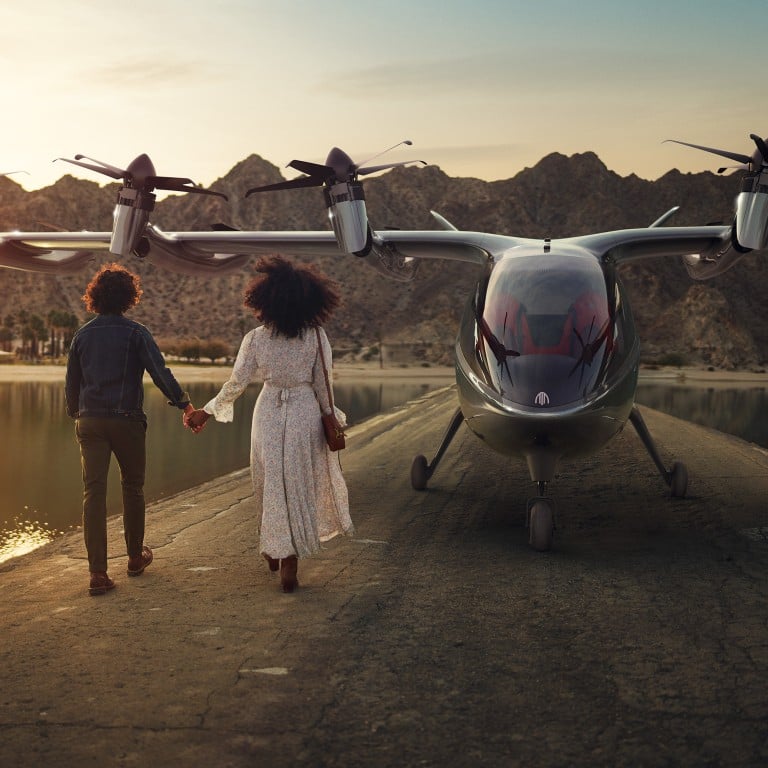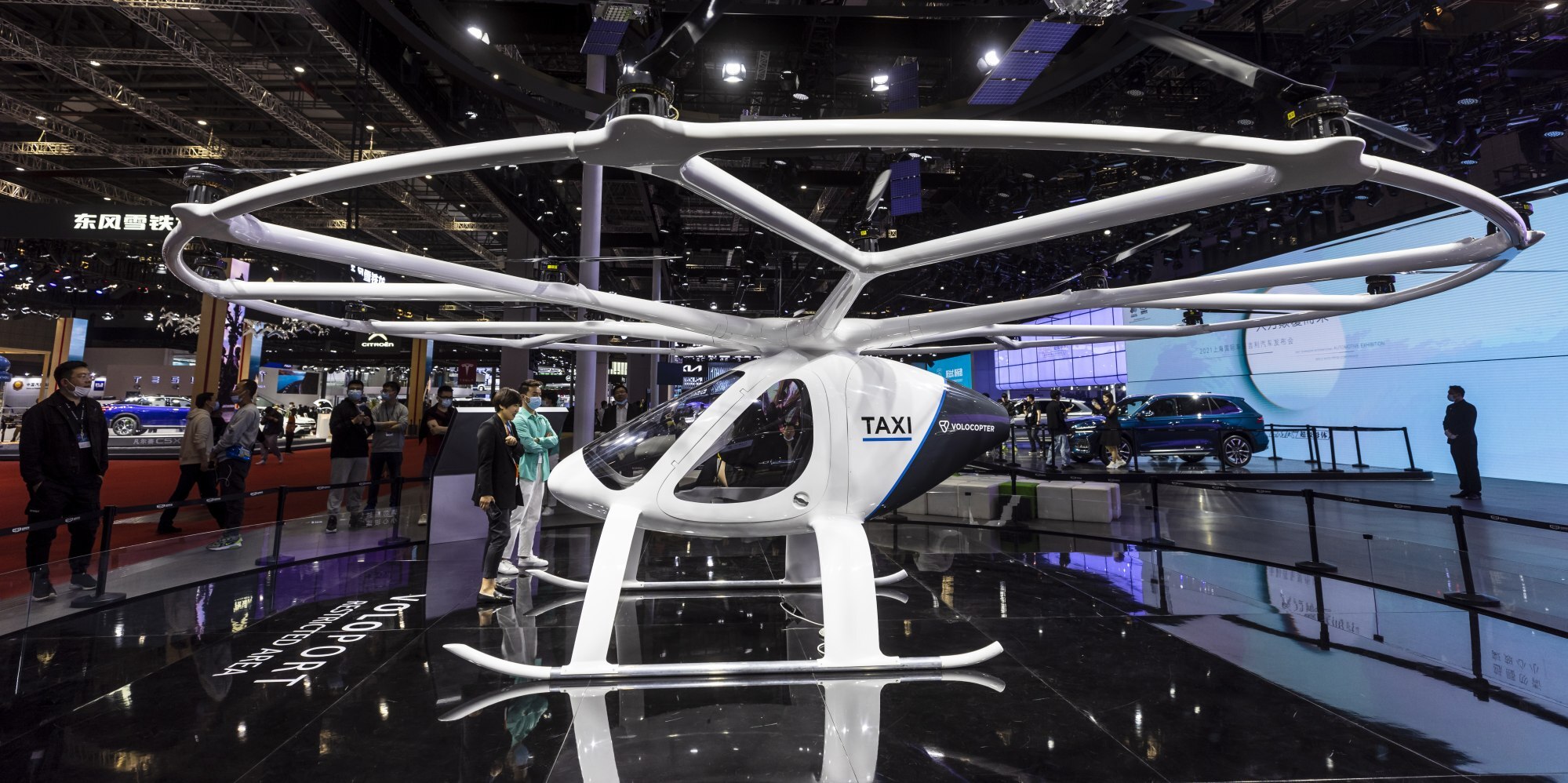Are flying taxis the future of transport? Experts say that passenger drones may take off as early as 2040 – making for a US$1.5 trillion market

Proponents of the flying taxi say the technology and the demand are already there – all that stands in the way are doubts over safety and the necessary legal framework.
Within a couple of years, grabbing a taxi could mean travelling over the city rather than through it. Indeed, the vision of a future espoused by the 1960s animated series The Jetsons, in which cars fly rather than drive, may be edging closer, given the number of companies now developing a new generation of VTOL (vertical take off/landing) battery-powered aircraft.
They will still require a professional pilot, but will carry four passengers at 320km/h and over a distance of maybe 160km, ideal for the ride, say, from city centre to airport, a short city-to-city hop, for tourist rides, even for medical evacuations. They may change the look of our skies too – some studies estimate that there could be some 430,000 such aircraft in operation globally by 2040, making for a US$1.5 trillion market.

What’s made this new and buoyant market possible? One key aspect has been the advance in various technologies: in avionics, in strong but lightweight composite materials, and especially in battery density, allowing these craft to have very low CO2 emissions but – crucially for operating over built-up environments – remain virtually silent.
Within a couple of years, grabbing a taxi could mean travelling over the city rather than through it
And then there’s the question of demand: with expected population shifts continuing from the rural to the urban (notwithstanding the contrary pandemic-era trend) predicting that cities will get bigger, more polluted and more congested, getting around will be harder too – at least in a car. Enter these new light aircraft, with rotatable fans mounted on wings, or wingless multi-rotor engines, among the various concepts.
Who is the richest Pink Floyd member? The band’s net worths, ranked
“These aircraft will change the public perception of flight,” reckons Jean-Christophe Lambert, the co-founder and CEO of Ascendance, a French flying taxi manufacturer and operator that expects its hybrid vehicle to be operational by 2025, and who previously managed electric aircraft projects for Airbus.

Indeed, operators reckon that costs per passenger per mile – at around US$1 to US$3 – will quickly be akin to that of a more conventional wheeled taxi. Brett Adcock, co-founder of Archer, a California-based VTOL aircraft developer, notes how electric propulsion also “drives down the significant maintenance costs associated with conventional combustion engines – due to the high number of moving and critical parts, maintenance accounts for some 30 per cent of direct operating costs for traditional helicopters. And by moving from fossil fuels to electrons to power our aircraft, we know there will be a substantial decline in energy-related costs, allowing us to plan for reduced operating costs relative to traditional modes of air transportation.”
These aren’t going to just be toys for rich people but a tech that will quickly be democratised
Not that price will be the only hurdle. There’s the matter of infrastructure. These aircraft will be able to operate from established helipads, though more “verti-ports” – perhaps conversions of car-park roofs – will need to be built. Some US cities such as Los Angeles and Houston have already started to plan these.
While this new generation of craft flies at a much lower altitude than conventional aircraft, at around 600 metres, also crucial will be how to manage their movement, especially in and out of busy airspace. Naturally, more crowded skies come with a greater risk of collision.
Meet Walt Disney’s billionaire-bashing grandniece, Abigail Disney
That’s why the other big hurdle to overcome will be one of perception: given that this technology is unfamiliar, the public may need convincing that it is safe. This is one reason why developers are not rushing to push for the inevitable autonomous versions of their aircraft, akin to proposed cargo drones, just yet. One step at a time … The new, piloted craft will, however, undergo the same certification processes as any commercial aircraft and will need to be given authorisation to fly commercially by relevant national authorities.

“People tend to see these aircraft and think of helicopters, but relatively it’s helicopters that are loud, expensive and not very safe,” says Andrew Macmillan, director of infrastructure for Vertical Aerospace, a British company taking a different approach by collaborating with aviation companies Honeywell and carmaker Rolls-Royce to develop a four-passenger aircraft it will then sell but not operate. The likes of American Airlines and Virgin Atlantic have already put in advance orders for 1,350 of them.
“That such big aviation brands are interested will, I think, help prove the [safety and commercial] case for these new aircraft,” adds Macmillan, “though so far, the world does seem to separate into those who can’t wait to get into one and those who remain a bit nervous. But compared to a helicopter it’s going to be a quieter, smoother, more pleasant experience.”
Why did these 5 Chinese tech billionaires step down?
“This is a brand new sector for aviation and does need careful introduction,” concedes Oliver Walker-Jones, head of marketing for another California-based player, Joby Aviation, which is developing an all-electric VTOL aircraft with investment from Toyota, aimed to go into use within four years.

“But the fact is that we need more efficient and more environmentally friendly modes of transport, to get beyond the slow, carbon-based ground transport. After all, there are amazing illustrations imagining taxis flying over cities that date to the 1920s – the idea was there even then, just not the tech. And we have that now.”

- Like something out of The Jetsons, flying cars may become the norm in coming decades – but will require eco-friendly methods and professional pilots to operate
- British company Vertical Aerospace is working with Honeywell and Rolls-Royce, already getting orders from American Airlines and Virgin Atlantic